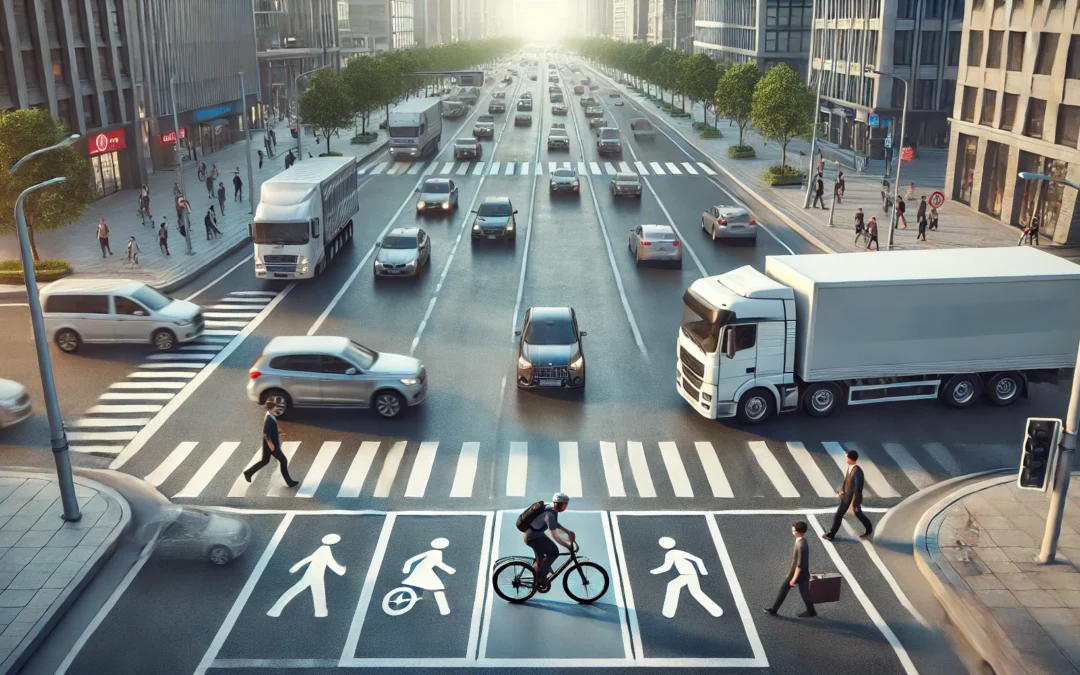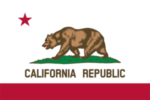Sharing the Road: Safely Navigating with Cyclists, Pedestrians, and Large Vehicles
Sharing the road with other road users is an essential aspect of safe driving. Whether you’re driving alongside cyclists, navigating around large trucks, or encountering pedestrians, understanding how to safely coexist is key to preventing accidents and maintaining smooth traffic flow. This guide outlines some of the best practices for sharing the road with different types of road users.
1. Sharing the Road with Cyclists
Bicyclists have the same rights and responsibilities as drivers. Because of their smaller size and lower speed, it’s important to remain alert when driving near them.
- Keep Your Distance: When passing a bicyclist, California law requires at least three feet of space between your vehicle and the cyclist.
- Watch for Bike Lanes: Drivers can only enter a bike lane within 200 feet of making a right turn or parking, and they must always check for cyclists before merging into the lane.
- Be Cautious at Night: Cyclists are required to use lights and reflectors, but drivers should still be extra vigilant in low-light conditions.
- Look Before You Turn: Always check your blind spots for cyclists before making a turn. They can be difficult to see, especially when they are riding alongside traffic.
2. Sharing the Road with Pedestrians
Pedestrians are the most vulnerable road users, and drivers must always yield to them at crosswalks and intersections, even if the crosswalk is unmarked.
- Yield at Crosswalks: Stop for pedestrians crossing the street at both marked and unmarked crosswalks. If a pedestrian makes eye contact, it indicates they are ready to cross, and you should stop.
- Blind Pedestrians: Extra caution should be used when sharing the road with pedestrians using guide dogs or white canes. These individuals always have the right-of-way.
3. Sharing the Road with Large Vehicles
Trucks, buses, and other large vehicles have larger blind spots and require more room to maneuver and stop. It’s important to adjust your driving to accommodate these characteristics.
- Avoid the “No-Zone”: Large trucks have significant blind spots on all sides, known as “No-Zones.” If you cannot see the truck’s mirrors, the truck driver likely cannot see you.
- Give Them Space to Stop: Large vehicles take longer to stop than smaller cars. Avoid cutting in front of them suddenly, as they may not be able to brake in time.
- Be Cautious at Turns: When large vehicles make turns, especially right turns, they may need to swing wide. Avoid positioning your vehicle too close to them at intersections.
4. Buses, Streetcars, and Trolleys
Public transportation vehicles have the same rights and responsibilities as other vehicles but operate under specific rules to ensure the safety of passengers.
- Safety Zones: Do not drive through safety zones, which are marked areas set aside for passengers waiting for buses or trolleys. Always stop behind these zones when necessary.
- Passing at Low Speed: When a bus, streetcar, or trolley is stopped at a safety zone, you may pass at no more than 10 mph.
- Yielding to Streetcars: Streetcars and light rail vehicles operate on specific tracks. Never attempt to pass a streetcar on the left unless directed by a traffic officer.
Conclusion
Sharing the road is about cooperation, awareness, and understanding the specific needs of different road users. By giving space to cyclists, yielding to pedestrians, and allowing large vehicles the room they need, you help create safer roads for everyone. Always stay alert and drive with caution to avoid collisions and ensure a smoother journey for all.






Recent Comments